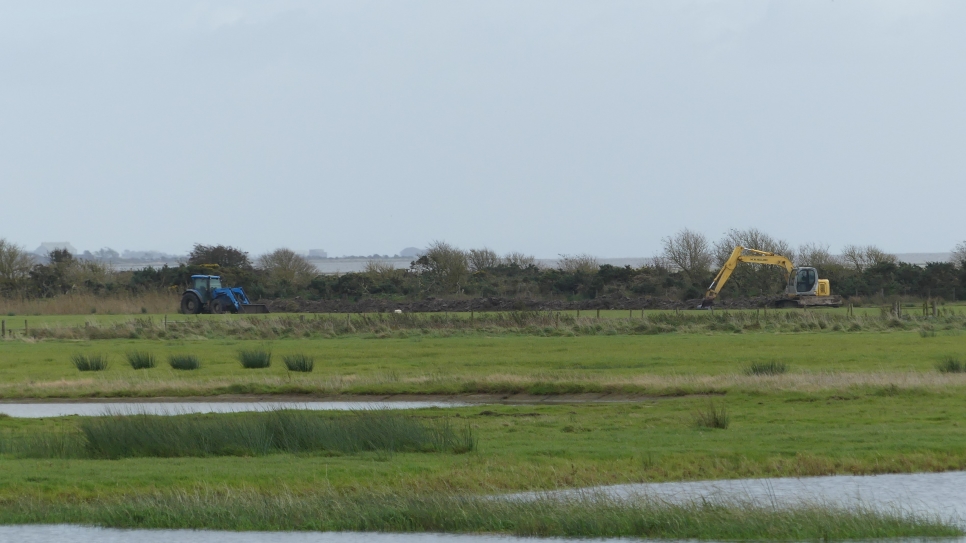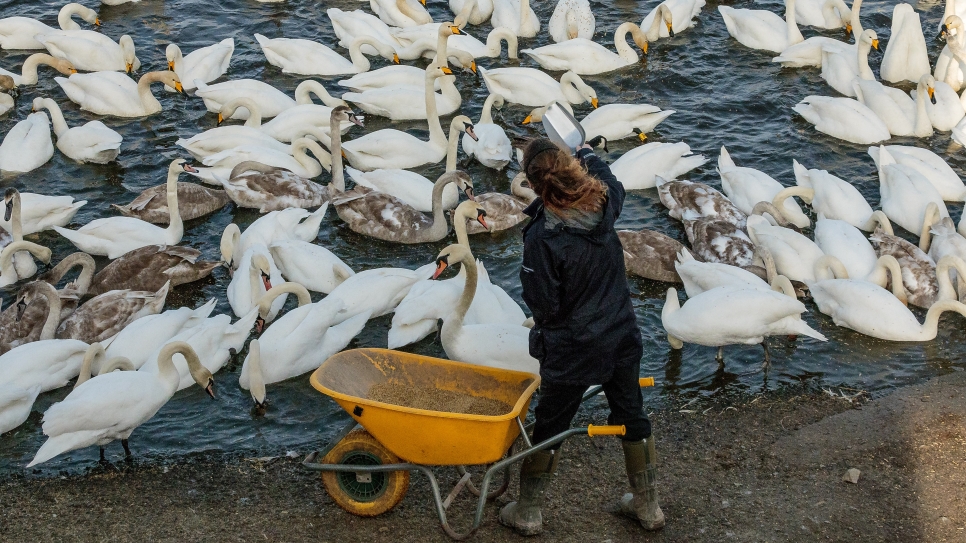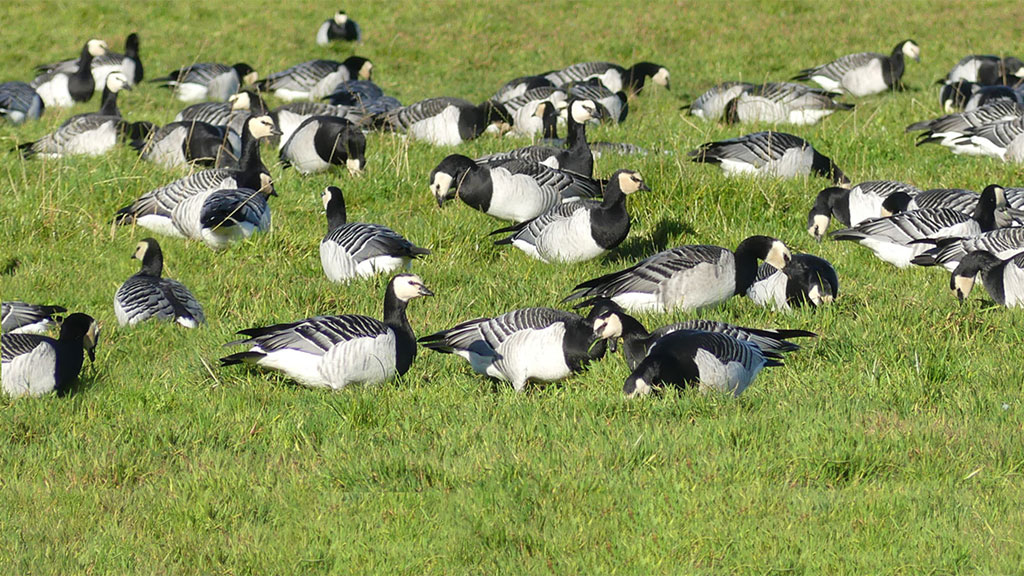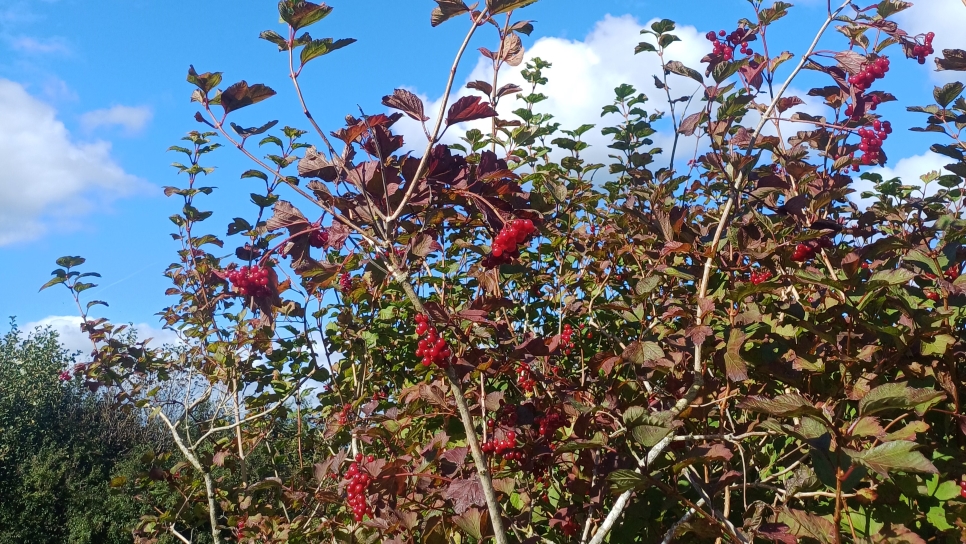Why are wetlands so important?

Through the Wilder, Wetter Caerlaverock project we have created and restored a large area of ground on the reserve back to wetland habitat. It’s something we talk a lot about to show the benefits of the work we are doing, but why are wetlands so important and why are we restoring so much?
So, what are wetlands? They are areas of land that are permanently or seasonally saturated with water. These are special, diverse places that change with the seasons. They include a wide range of habitats in the UK such as peat bog, lakes, wet grassland, saltmarsh, wet woodland, ponds, and fen - just to name a few. Some of these can be found at WWT Caerlaverock!
What makes them so special? 40% of the worlds species are reliant on wetlands and over the last 300 years 87% of the worlds wetlands have been lost which makes a very worrying combination. In the UK, we have lost 90% of our wetlands in the last century. The loss of wetland habitat puts a huge amount of species at risk of population decline or even extinction, but it goes even further than that. Wetlands are important for society. This could be as a source of water, a carbon store known as “blue carbon” - which many of these habitats such as peat bog are excellently efficient at storing - or as a flood defence which is becoming increasingly important as climate change brings more unpredictable weather patterns.
As an organisation we’re fighting to restore wetlands, improve them, and save them. You won’t find many better examples of this than at WWT Caerlaverock! Our current landscape scale project Wilder, Wetter Caerlaverock was created to work across the site restoring wetlands and improving existing wetlands, creating a climate resilient landscape. Caerlaverock offers a fantastic opportunity for this work as much of the land was drained using field drains, and some fields have vast pipe networks, in an effort to improve them for agriculture. Though in most of these fields it didn’t fully work, evidenced by swaths of rush tussocks weaving through the fields as a remnant to what would have been. The project aims to restore wet grassland throughout the reserve over a three year period by blocking these field drains via trench bunding methods where we dig through the pipe and back fill with the same soil creating a tight compact bund. This is the third and final year we have been doing this over the reserve and we’re already seeing the results. The fields hold a higher water table for longer, with surface water building up much quicker than before. As well as the blocking of field drains slowing down the draining of water on our land, we have created pools and channels where water can gather and hold.
At the current stage of the project 7,700m of trench bunding has been completed. Without a doubt this work has made a vital difference to the reserve and the wildlife on it, but what have we noticed so far?
One of the great things about the project being carried out over a three year period is that the restoration work varies in age and we can compare the younger and older work to see how the land is reacting. Some of the highlights of what we have seen include:
Aquatic plants: the speed in which aquatic plants have recolonised certain restored areas is astonishing! From redshank and yellow flag, to water plantain and water forget me not. It’s great to see this as it shows these habitats transition to wet grassland.
Keeping hold of water: one of the big successes is something I mentioned earlier. It’s great to see how the land has reacted to blocking up field drains, watching the fields hold substantially more water, and hold onto it for longer, is extremely satisfying and the wildlife seem to be loving it too!
Wildfowl and waders: at times, almost instantly, waders and ducks have used our new pools and channels. Some of these flooded fields were full of birds in the winter with multiple calls filling the air with noise! Lapwing, teal, wigeon, shoveler, curlew, and snipe in particular seem to be loving our changes. Even ruff, avocet, and wood sandpiper have enjoyed our improvements.
Dragonflies: common darter, blue-tailed damselflies, azure damselflies, four-spotted chasers, emperor dragonflies, and even the site's first broad-bodied chaser have been recorded around our newly created ponds
In summary… we are boosting biodiversity! We are seeing it in plant life, invertebrates, birds, and the habitats themselves. Come and see for yourself!
The Wilder, Wetter Caerlaverock project is supported by the Scottish Government’s Nature Restoration Fund, managed by NatureScot.
Words by Jake Goodwin



